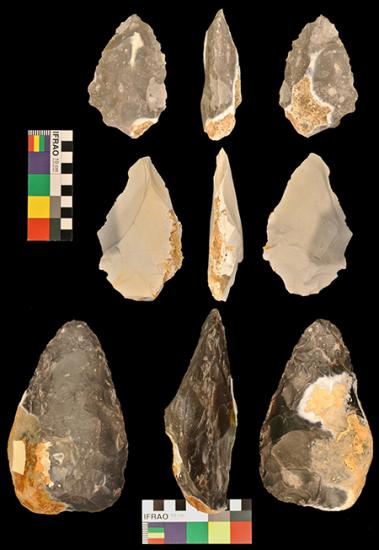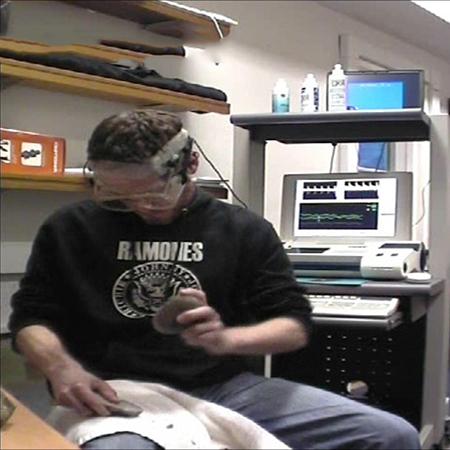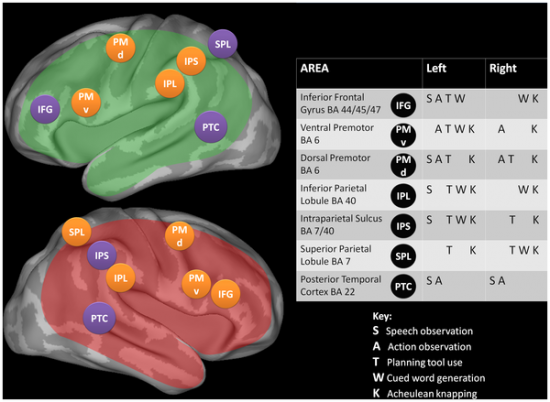University of Liverpool
Source - http://phys.org/news/2013-09-language-tool-making-skills-evolved.html

Three hand axes produced by participants in the experiment. Front, back and side views are shown.
Research by the University of Liverpool has found that the same brain activity is used for language production and making complex tools, supporting the theory that they evolved at the same time.
Researchers from the University tested the brain activity of 10 expert stone tool makers (flint knappers) as they undertook a stone tool-making task and a standard language test.
Brain blood flow activity measured
They measured the brain blood flow activity of the participants as they performed both tasks using functional Transcranial Doppler Ultrasound (fTCD), commonly used in clinical settings to test patients' language functions after brain damage or before surgery.
The researchers found that brain patterns for both tasks correlated, suggesting that they both use the same area of the brain. Language and stone tool-making are considered to be unique features of humankind that evolved over millions of years.
Darwin was the first to suggest that tool-use and language may have co-evolved, because they both depend on complex planning and the coordination of actions but until now there has been little evidence to support this.
Dr Georg Meyer, from the University Department of Experimental Psychology, said: "This is the first study of the brain to compare complex stone tool-making directly with language.

The brain activity of an experienced flint-knapper is monitored using a Transcranial Doppler Ultrasound, as he works the stone.

Figure 1. Brain regions activated during speech and action observation, tool-use, word generation, and Acheulean knapping.
S = speech observation, A = action observation, T = planning tool use, W = word generation, K = Acheulean knapping. The table shows potential overlap in the neural networks used in all five tasks. The posterior temporal cortex is used exclusively for observation. Fronto-parietal brain areas activated by both cued word generation and knapping are highlighted in orange. Cortical areas supplied by the MCA (middle cerebral artery) are highlighted in green (left hemisphere) and red (right hemisphere). doi:10.1371/journal.pone.0072693.g001
Tool use and language co-evolved
"Our study found correlated blood-flow patterns in the first 10 seconds of undertaking both tasks. This suggests that both tasks depend on common brain areas and is consistent with theories that tool-use and language co-evolved and share common processing networks in the brain."
Dr Natalie Uomini from the University's Department of Archaeology, Classics & Egyptology, said: "Nobody has been able to measure brain activity in real time while making a stone tool. This is a first for both archaeology and psychology."
The research was published in PLOS ONE: Research determines how the brain computes tool use: dx.plos.org/10.1371/journal.pone.0072693